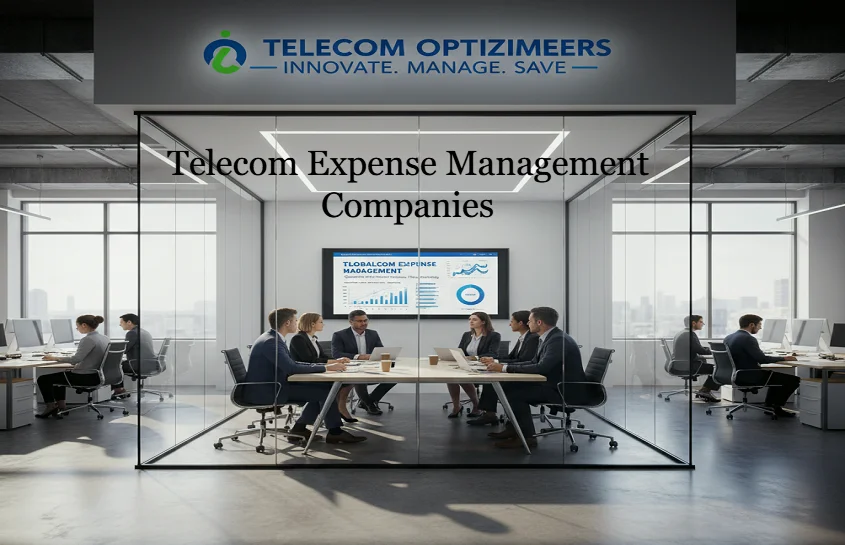The digital world runs on connectivity. From mobile data to unified communications, telecom has become the nervous system of every modern business. Yet, with that dependence comes complexity—multiple carriers, devices, cloud systems, and a growing web of invoices. That’s why telecom expense management companies exist. These firms help organizations monitor, manage, and reduce telecom costs while improving visibility and compliance. Their specialized telecom expense management services and intelligent telecom expense management solutions bring order to what often feels like chaos.
In this detailed guide, we’ll explore how telecom expense management works, the benefits of telecom expense management, what makes a good telecom expense management system, and how to choose the right partner for your organization.
Understanding Telecom Expense Management Companies
Telecom expense management (often shortened to TEM) is a structured approach to controlling the cost and performance of a company’s communications ecosystem.
Telecom expense management companies provide the tools, expertise, and analytics needed to achieve this. They audit telecom bills, manage vendor relationships, optimize contracts, track assets, and help enterprises make smarter spending decisions.
These companies combine human expertise with software-based telecom expense management solutions to deliver real savings and accountability. The goal is simple but powerful: help businesses pay only for what they truly need and use.
Why Businesses Need Telecom Expense Management Services
Telecom environments are getting more complicated every year. Between mobile devices, cloud systems, IoT connectivity, 5G networks, and remote workers, the typical enterprise deals with hundreds of expense lines and contracts.
Without structured telecom expense management services, companies risk:
- Paying for unused devices or lines.
- Overpaying due to carrier billing errors.
- Losing visibility into real-time spending.
- Wasting staff time on manual invoice processing.
That’s where telecom expense management companies step in. They bring systems, processes, and expertise to simplify and automate every aspect of telecom cost control.
Core Functions of Telecom Expense Management Solutions
A reliable telecom expense management system covers every step of the telecom lifecycle—from purchasing to payment. Let’s break it down.
1. Invoice Management and Bill Auditing
Telecom invoices can be notoriously complex. A TEM provider reviews every line item, matches it against your contract terms, and flags errors or overcharges.
Even small percentage errors—just 2–3%—can translate into massive annual savings. Regular audits, one of the primary benefits of telecom expense management, ensure you never pay for services you didn’t authorize.
2. Inventory and Asset Control
Keeping track of devices, numbers, SIM cards, and circuits across multiple departments or regions can be a logistical nightmare. A telecom expense management system centralizes this inventory so you always know what you have, who uses it, and what it costs.
This visibility eliminates wasteful spending on inactive lines or unreturned devices.
3. Usage Optimization
Usage analytics is one of the most practical telecom expense management solutions available. By comparing usage patterns against plans, TEM experts identify underutilized services or users who consistently exceed their limits.
Adjusting plans and consolidating accounts are easy wins that can save thousands annually.
4. Contract and Vendor Management
Most organizations work with multiple carriers, each with different contract dates, SLAs, and pricing structures. Managing all of that manually is nearly impossible.
Telecom expense management companies track every renewal and help renegotiate contracts based on actual usage. The result: lower rates, better terms, and fewer surprises.
5. Reporting and Analytics
The best telecom expense management services include dashboards that give a complete picture of your telecom ecosystem.
Leaders can track spending by department, region, or vendor, spot trends early, and forecast future needs. These insights drive strategic decisions, not just reactive cost cuts.
Benefits of Telecom Expense Management

Investing in a structured telecom expense management system yields clear, measurable advantages. Here are the most significant benefits of telecom expense management businesses experience.
1. Cost Savings and Financial Control
Every organization wants to reduce unnecessary costs, but most lack the visibility to do so. Telecom expense management companies analyze billing data line by line, identifying overcharges, duplicate services, and hidden fees.
Through ongoing monitoring and optimization, companies typically save between 15% and 30% on their annual telecom budgets.
2. Efficiency Through Automation
Manual processing of telecom invoices is error-prone and time-consuming. Automation is a core feature of modern telecom expense management solutions.
Invoices are digitized, approved, and reconciled automatically, freeing staff from repetitive administrative work and ensuring nothing slips through the cracks.
3. Stronger Vendor Relationships
A clear and consistent process for handling billing, renewals, and dispute resolution strengthens your relationship with telecom providers.
Using a telecom expense management system, companies can track vendor performance, evaluate service reliability, and hold providers accountable to SLAs.
4. Risk and Compliance Management
Regulatory compliance is becoming more complex, especially for international operations. A well-managed telecom expense management service ensures compliance with data protection rules, contract terms, and billing regulations.
It reduces financial risk, audit exposure, and the chance of paying for services that breach policy or region-specific law.
5. Better Strategic Planning
The insights generated by telecom expense management solutions help organizations make smarter strategic decisions. Finance and IT can forecast budgets more accurately, identify usage patterns, and plan network upgrades or expansions based on real data.
How a Telecom Expense Management System Works
A telecom expense management system is both a process and a platform. It integrates financial, contractual, and usage data into one ecosystem. Here’s how it typically operates:
- Data Collection: Telecom invoices, usage reports, and inventory lists are gathered from carriers and internal systems.
- Normalization: Data is formatted consistently so it can be compared across multiple vendors and currencies.
- Validation: Charges are matched against contracts, service orders, and inventory. Any discrepancy is flagged.
- Approval Workflow: Bills move through an automated workflow for review and authorization.
- Optimization: Insights are generated to recommend cost-saving changes.
- Reporting: Dashboards and KPIs show total spend, variance, and trends in real time.
Together, these steps make the telecom expense management services both preventive and corrective—catching errors and creating a framework for continuous improvement.
Real-World Benefits of Telecom Expense Management Services
Let’s look at a practical example.
A global logistics company with over 10,000 employees worked with five different carriers and managed hundreds of mobile contracts manually. They engaged one of the top telecom expense management companies to centralize their telecom data.
Within a year:
- They discovered and eliminated 18% of unused mobile lines.
- Recovered over $250,000 in billing errors.
- Automated 90% of invoice approvals.
- Created a single global dashboard showing spend by region and department.
The result was not just savings, but control — proof of the tangible benefits of telecom expense management when done professionally.
How to Choose the Right Telecom Expense Management Company
Selecting the right partner among telecom expense management companies can define the success of your entire initiative. Here’s what to evaluate carefully:
1. Experience and Track Record
Choose a provider with proven results in your industry. Ask for client success stories, cost-savings metrics, and long-term engagement rates.
2. Technology and Integration
Look for modern telecom expense management solutions that integrate with ERP, accounting, and procurement systems. Data synchronization avoids duplication and delays.
3. Flexibility and Scalability
A good telecom expense management system must adapt as your company grows or changes. Whether you expand internationally or migrate to 5G and IoT, your provider should scale effortlessly.
4. Transparency and Reporting
Avoid black-box vendors. The best telecom expense management services provide transparent reporting, clear documentation, and actionable insights—not just raw data.
5. Customer Support and Governance
Select a company that provides ongoing consultation, not just software. Governance reviews, quarterly reports, and strategic meetings show long-term commitment.
The Evolving Role of Telecom Expense Management Solutions
Telecom expense management has matured far beyond simple bill auditing. Today’s leading telecom expense management solutions integrate with IT asset management, cloud cost control, and IoT monitoring.
They use advanced analytics, automation, and sometimes AI to spot anomalies faster and improve efficiency.
As hybrid work and mobile-first operations continue to expand, telecom expense management companies play an even larger role in keeping connectivity costs under control—without compromising on flexibility or performance.
Future Outlook: What’s Next for Telecom Expense Management
The next decade will redefine how businesses handle telecom and technology expenses. Expect to see:
- AI-Driven Insights: Predictive analysis that identifies cost anomalies before they happen.
- Unified Expense Platforms: Integration of telecom, cloud, and software expenses into one platform.
- Sustainability Tracking: Linking telecom usage and procurement with environmental impact goals.
- Global Standardization: Companies adopting unified telecom expense management systems across multiple regions for consistency and compliance.
The future will reward businesses that treat telecom expense management not as a back-office function but as a core financial discipline.
Conclusion
In a world that depends on connectivity, managing telecom expenses is no longer optional—it’s strategic.
Telecom expense management companies give businesses the visibility, control, and insight they need to operate efficiently. Their telecom expense management services automate what once took months, and their telecom expense management solutions provide accurate, real-time data for better decisions.
The benefits of telecom expense management are clear: reduced costs, improved efficiency, stronger compliance, and a better return on every dollar spent.
Whether you’re a mid-sized business or a global enterprise, implementing a robust telecom expense management system isn’t just about saving money—it’s about running smarter. The sooner you take control, the sooner your communications budget starts working for you, not against you.

